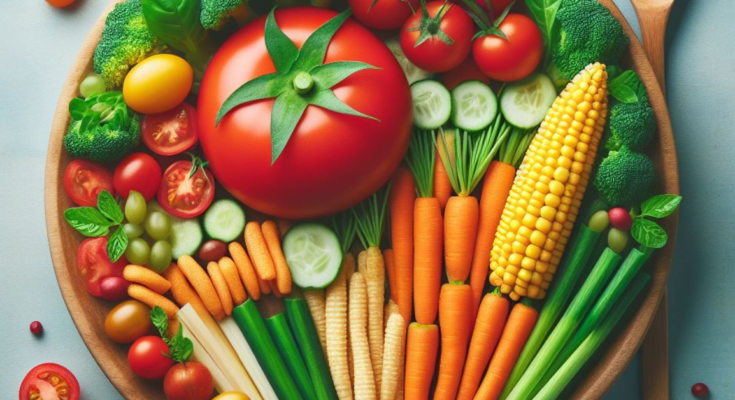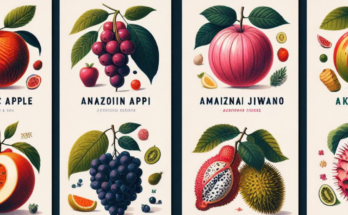Ever ponder if the abundance that appears to be natural on your plate conceals a startling secret? Veggie lovers, get comfortable, as many of those man made vegetables are not at all like their wild counterparts. The vegetables we know and love today have been greatly influenced by human activity, both through centuries of selective breeding and contemporary scientific interventions. As we reveal five unexpected superstars of the edible world—all proudly bearing the stamp of human ingenuity—get ready to be astounded.
“Man made vegetables” is a term that doesn’t do the situation justice. Though that implies that vegetables are essentially made from scratch in laboratories, that isn’t true. It has more to do with how much human manipulation and intervention have shaped the vegetables we know and love today.
Indeed, many of our favorite veggies wouldn’t even recognize their wild ancestors, so forget about perfect, unspoiled produce! For centuries, people have been modifying vegetables to enhance their sweetness, size, resilience, and flavor through various means, such as selective breeding and scientific interventions. As we reveal the five unexpected superstars of the edible world—each a testament to the effectiveness of human intervention—get ready to be astounded:
1. Carrots
Do you recall the famous scene in which Bugs Bunny eats a bright orange carrot? Likely, the cartoon rabbit would not have been overly impressed by the untamed ancestors of these popular vegetables. Carrots were thin, purple, and quite woody at first, but man made vegetables practices gave them a remarkable makeover.
Farmers in Central Asia decided more than 2,000 years ago to grow larger, sweeter, and most importantly, orange-hued varieties. They eventually coaxed out the crunchy orange carrot rich in beta-carotene that we enjoy today by carefully choosing plants with these desired traits and breeding them over several generations.
Therefore, the next time you grab a carrot stick, consider how man made vegetables have contributed to its amazing journey from humble beginnings to vibrant powerhouses!
2. Broccoli, Cauliflower, Kale, and More
Who would have thought that seemingly unrelated veggies like kale, cauliflower, and broccoli could all have a startling family secret in common? Unbelievably, they are all related to a single wild mustard plant found in the Mediterranean, making them all members of the man made vegetables club.
With their acute sense of taste, humans discovered untapped potential in this modest ancestor. They fostered the development of particular traits through selective breeding, ultimately resulting in the creation of a varied family of mouthwatering choices.
Thanks to man made vegetables, kale’s curly leaves, cauliflower’s “heads,” and broccoli’s florets are all variations on a single genetic theme. Therefore, keep in mind their common ancestry and be grateful for the human ingenuity that brought these vegetables to your plate the next time you toss them into a salad!
3. Watermelons
Just picture biting into a juicy watermelon and not finding a single annoying seed! This delightful fact serves as evidence of the influence of contemporary science on man made vegetables. By using a method known as polyploidy, researchers can double or triple the number of chromosomes in watermelon plants.
This seemingly intricate procedure has a cunning result in that it makes the seeds sterile, stopping them from growing. What was the outcome? Watermelons without seeds provide us with pure, hassle-free enjoyment while allowing the plants to easily regulate their reproduction.
This creative method demonstrates the fascinating ways science is influencing the world of man made vegetables, influencing not only the flavor but also the practicality of our diet.
4. Tomatoes
Put down the ketchup! Did you know that your go-to tomato sauce base had a major makeover before it was served to you? The juicy, flavorful fruit we know and love was very different from the ancestor of the tomato of today. It was small, yellow, and quite frankly unappealing in its original form.
But over centuries of careful breeding in South America, humans were able to gradually extract the sweetness and size that we enjoy to this day. The name itself reflects this intriguing journey: the word “tomato” is derived from the Aztec word “tomato,” which means “plump fruit.”
Thus, the next time you relish the tart sweetness of a tomato, recall its fascinating journey from bitter origins to a delectable culinary treat, all because of the commitment of those early man made vegetables pioneers.
5. Baby Corn
Have you ever wondered how those cute baby corn cobs stay so small? Well, the clever realm of man made vegetables holds the key to the solution. Baby corn is just a deft timing device rather than a unique variety.
Regular corn’s pollination is managed by farmers, who essentially stop the growth of the crop when it is still immature. This yields the familiar and beloved bite-sized sweetness, demonstrating that flavor is largely independent of size.
The next time you enjoy some baby corn, keep in mind that its size is a result of human manipulation of the natural world for culinary purposes. It’s a fitting way to wrap up our investigation of man made vegetables and illustrate the various ways that humans have impacted the food that we eat.
Conclusion:
In conclusion, our brief exploration of artificially produced vegetables has revealed an unexpected reality: the abundant produce that appears to be natural on our plates frequently has intriguing histories of human involvement. If you want to read about the man-made invented fruits.
Every delectable morsel showcases centuries of inventiveness and scientific investigation, ranging from carefully selecting carrots to enhance their sweetness to controlling corn growth to produce small cobs. However, the adventure is far from over.
The need for artificially produced vegetables becomes even more pressing as we deal with the effects of climate change and population increase. More nutrient-dense, resilient, and sustainable crops are now desperately needed. Think of drought-tolerant tomatoes that need less water, disease-resistant potatoes that can survive in harsh conditions or vegetables that are rich in nutrients and have higher levels of vitamins and minerals.
Thanks to ongoing advancements in the field of man made vegetables, these are exciting possibilities that are just around the corner rather than pipe dreams.
Cutting-edge breeding methods and gene editing tools provide hitherto unseen possibilities for customizing crops to meet particular requirements. Researchers are currently working on creating artificial vegetables that will be more resilient to pests and illnesses, produce more, and have better nutritional values.
With the potential to transform agriculture, these advancements could help mitigate the effects of climate change and guarantee food security for an expanding population.
Therefore, keep in mind the amazing journey that led to that juicy watermelon, crunchy carrot, or bite-sized baby corn the next time you enjoy them. Honor the science and creativity that went into its creation in addition to its deliciousness. Imagine a world in which artificially produced veggies will only advance and become more essential to feeding a more sustainable and healthful population.
Recall that our dinner plates serve as both canvases for delicious food and evidence of the amazing partnership between human ingenuity and the natural world. As we move toward a future where food not only nourishes us but also flourishes in harmony with our planet, let’s embrace the potential of man made vegetables.




